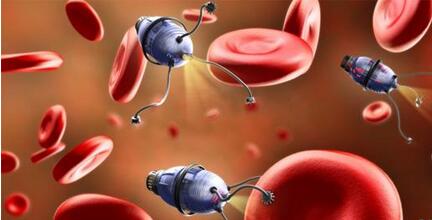Robots are a multidisciplinary, comprehensive field. The motivation for robot development comes from two aspects:
The first is the promotion of new technology development, and the second is the pulling of new applications.
From these two aspects, the development of robot technology has been promoted and driven. So we talk about the development of robots from the emergence of new technologies and the emergence of new applications.
When the robot first appeared, the robot and the person worked in the same environment, and the main purpose of developing the robot was to replace the person. Due to the development of information technology, robots simply replace people, and now they can develop the ability to expand people. In addition to being able to do some work that no one can do, robots can still do some work. For example, after the robot is connected to the Internet, we can control the distant robots through the network, and we can do things that people can't reach or touch, so information technology provides new impetus to the robots, and also provides new applications.

On the other hand, the development of nano and micro-nano technologies has also provided new applications for robots.
For example, in the micro-nano field, the most challenging problem is that the environment is very small. The position we have to operate is very small. It is invisible and intangible. Now the robot can see things that are invisible and intangible. It can touch and expand the processing ability of people in a tiny environment. The development of biotechnology has also provided many new application fields for robots, but the biological field is not the same as the traditional manufacturing industry. Because cells live under specific physiological conditions, it is not only operational to promote robotics into this field. The material is small and the environment is very special.
Therefore, from these three aspects, the robot can expand the human ability, overcome the difficulties brought by the distance, overcome the difficulties brought by the scale, and overcome the difficulties brought by the environment, such as the physiological environment. . In combination, robots can expand human capabilities in addition to simply replacing people. This is what we call an over-limit robot that transcends human limits and overcomes the difficulties that distance, scale and environment bring to humans.
Antenk D-Sub,D-Shaped Connectors Solutions offer a broad range of higher reliability D-Sub connectors.
Antenk's D-Sub product line is designed for applications that require a rugged, robust I/O connector system with various styles and mounting options. All are used in a variety of industries including computer, industrial, medical, and military markets.
Antenk High-Density D-Sub Connectors
Available in cable mount options including crimp & solder cup and the board mount options including Dip Solder, Wire Wrap, High Profile, Right Angle, & Surface Mount (SMT). This comprehensive Antenk High-Density Density D-Sub product offering is available in both stamped & formed and machined contact options.
High density D-Sub connectors, for applications where the best possible contact density is required. Due to the [high" density of the 15, 26, 44, 62 and 78 contacts, this series is ideal for the most modern applications. The insulating body, a monoblock, complies with the UL94 V-0 standard. The contacts are machined and available in several quality classes.
Antenk Solder Type D-Sub Connector
Available in standard and high density versions
Supplied with stamped & formed or screw machine contacts.
Standard contact terminations accomodate up to 20 AWG standard wire
Available with white (nylon) or black (PBT) insulators. Standard shell plating is tin
Antenk D-Sub connectors solder cup machined contacts are manufactured according to the standards MIL-C-24308 and DIN 41652. The standard connectors from Antenk are available in all known versions and sizes. They are available in various version with numerous assemblies. The insulating body, a monoblock, complies with the UL94 V-0 standard. The contacts are machined and available in several quality classes.
Features of Antenk's Solder Cup Standard D-Sub Connector Machined contacts
Solder cup d-sub available in 5 industry sizes/positions
Standard Density (9 pin, 15 pin, 25 pin, 37 pin, 50 pin)
Tin shells have indents to provide grounding and additional retention.
Screw machine contacts offer high reliability. Non-removable contacts.
Optional mounting hardware available.
Materials of Antenk Solder Cup Standard D-Sub Connector Machined contacts
Shell: Steel, tin plated
Insulator: Glass-filled thermoplastic. U.L. rated 94V-O
(260°C process temp)
Machined contacts:
Male pins - Brass | Female pins - Brass
Plating: Gold flash on entire contact
Contact us for other plating options
Features of Solder Cup High Density D-Sub Machined Contacts
Solder cup d-subs in 4 industry sizes/positions
High Density (15 pin, 26 pin, 44 pin, 62 pin).
Approximately 65% more higher density then standard d-sub connectors.
Screw machined contacts offer high reliability.
Metal Shell provides EMI/RFI shielding. Available in 3 clinch-nut options.
Plug shells have indents to provide grounding & additional retention.
Connectors will fit in standard D-sub backshells.
Contacts will accept (28 - 24) gauge wire.
Materials of Solder Cup High Density D-Sub Machined Contacts
Shell: Steel, Nickel plated
Insulator: Glass-filled, PBT Thermoplastic. U.L. rated 94V-O
(230°C process temp)
Machined contacts: Brass, Gold Flash Plated(contact us for other plating options)
9 pin, 15 pin, 25 pin, 37 pin, 50 pin Male Solder Cup Standard D-Sub Connectors Machined Contacts, Solder Cup High Density D-Sub Machined Contacts,Female Solder Cup Standard D-Sub Connectors Machined Contacts
ShenZhen Antenk Electronics Co,Ltd , https://www.antenkconn.com